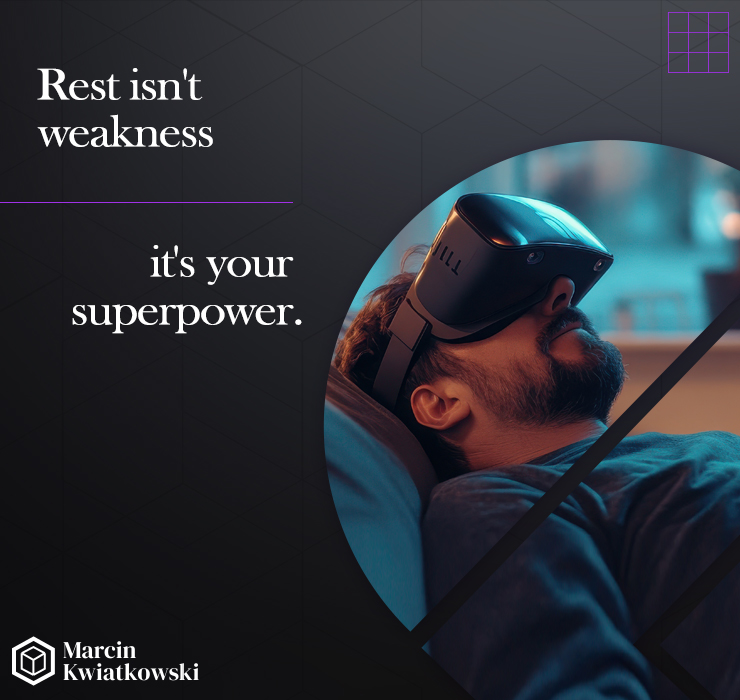
A team lead's work often feels like an endless sprint - constant meetings, deadlines, and overwhelming responsibilities. I went through this myself until I found myself on the brink of burnout, weighing 233 lbs and barely able to look at my computer. What seemed like the end of my career became the beginning of something new. I discovered that the key to effective leadership lies in... running. In this article, I'll tell you how sports not only helped me lose 35 pounds but, more importantly, became a source of valuable lessons about team management and energy control. Discover the story of transformation from a breathless leader to a marathon runner who learned that the right pace is crucial in both life and work.
First Miles as a Leader
When I became a team lead, I felt like I was at the start line of a great race. I had the energy, enthusiasm, and conviction that with my technical preparation and experience, I could handle everything. Days were filled with planning, coding, and mentoring. It seemed like it would be an easy run to the finish line.

Getting Short of Breath
Over time, the pace started to overwhelm me. My calendar was bursting with meetings, and each day brought new challenges. I tried to run faster and faster – be at every meeting, solve every technical problem, support my people non-stop.
My form was deteriorating. I worked more, drank more coffee, ate at my computer. The scale showed 233 lbs – the effect of a sedentary lifestyle and stress-induced candy consumption. I felt like a marathon runner who had poorly paced himself and was barely breathing at mile 6.
The Wall
In marathon running, they talk about “hitting the wall” around mile 18. My wall as a team lead came after several weeks of torment. I could say it came unexpectedly, but I had been feeling increasingly worse for some time. One day, when I looked at my computer screen, I felt I couldn’t take it anymore. Physically and mentally, I was at my limit. I even felt nauseous when forcing myself to work.
As it turned out later, this was my turning point. I understood that leading a team isn’t a sprint – it’s a marathon. And in a marathon, the key isn’t just training, but proper pacing and recovery.

Second Wind
When I finally admitted to myself that enough was enough and noticed my poor condition and excess weight, I decided to start running. I began with small steps – literally. My first attempts at running were embarrassing – I could barely run a kilometer. But slowly, step by step, I built up my form. With each training session, I learned something new about myself and about how important proper pacing is.
I started applying these lessons to my work:
- I understood that not every day has to be a sprint
- I learned to plan my “training sessions” (tasks) in advance
- I discovered the value of regular recovery
- I began consciously choosing which “races” (initiatives) to participate in
The Finish Line That’s a New Beginning
After two years, I ran a half marathon, and after three – I completed a full marathon. But more important than the medals were the lessons I transferred to my work and role as a team lead:
-
Pace is key - You can’t sprint through an entire marathon. Similarly, you can’t be 100% available during all your work hours.
-
Recovery is part of training - Rest isn’t laziness, but a necessary element of development.
-
Planning is fundamental - Just like in running training, leading a team needs a plan and consistency.
-
Small steps lead to big goals - From barely running a kilometer to completing a marathon, from a chaotic leader to a self-aware person who knows both their strengths and limitations.
New Chapter
Today, weighing 198 lbs and being in the best shape of my life, I view the team lead role as an ultra-marathon – it’s not a race to the finish line, but a long adventure where the key is balanced pace, proper nutrition, taking care of your health, and regular recovery.
If you feel like you’re running on your last breath in your leadership role, start with small steps:
- Plan one 30-minute walk daily
- Introduce regular breaks at work
- Learn to decline participation in “races” that aren’t your priority
- Find your form of movement – it doesn’t have to be running!
Remember – you don’t become a marathon runner in one day. Similarly, you don’t become a great leader just by taking on the role. It’s a process that requires patience, consistency, and… good pacing. I learned this through my own mistakes.
So, which mile of your “team lead marathon” are you at?

 Github
Github
 Linkedin
Linkedin